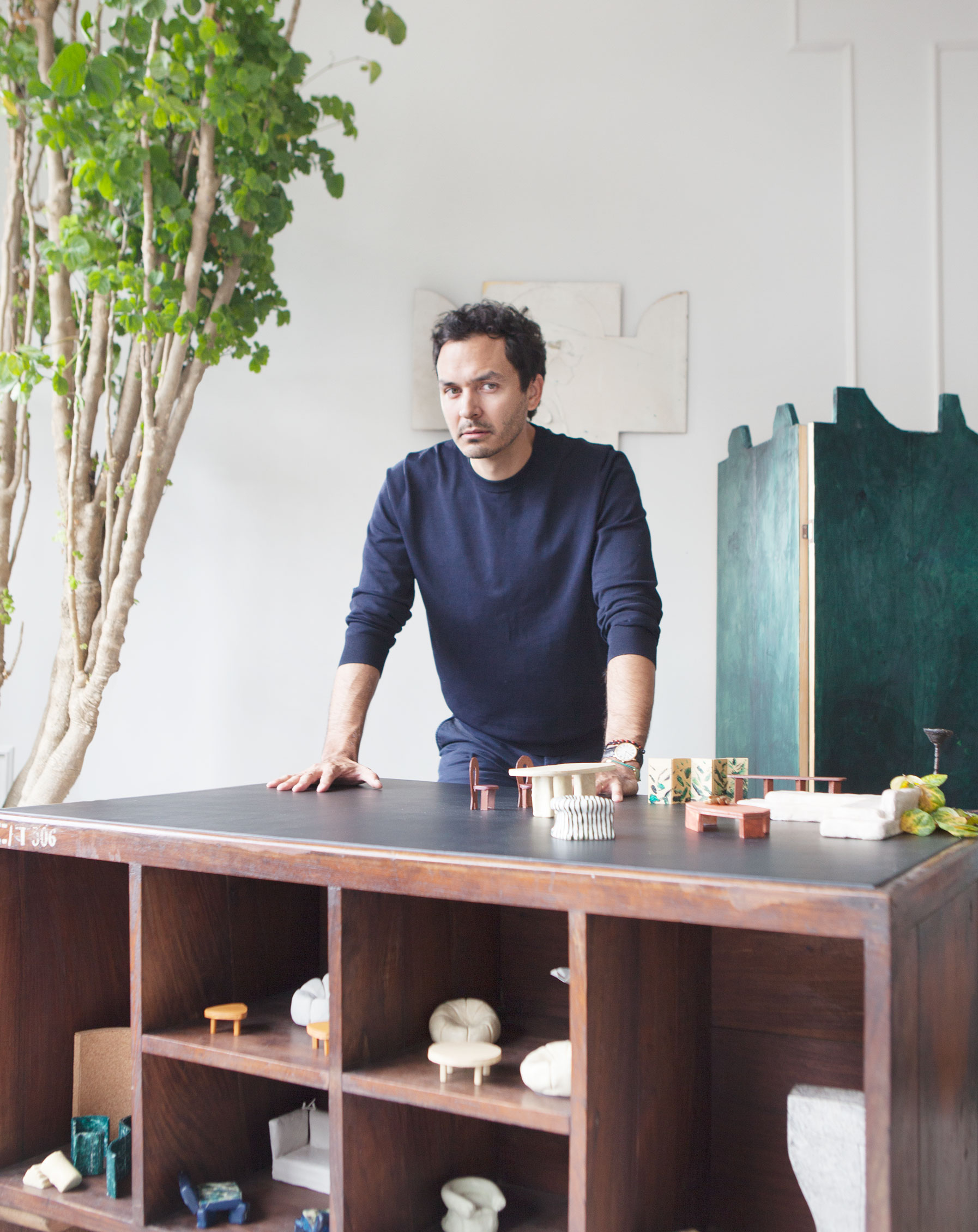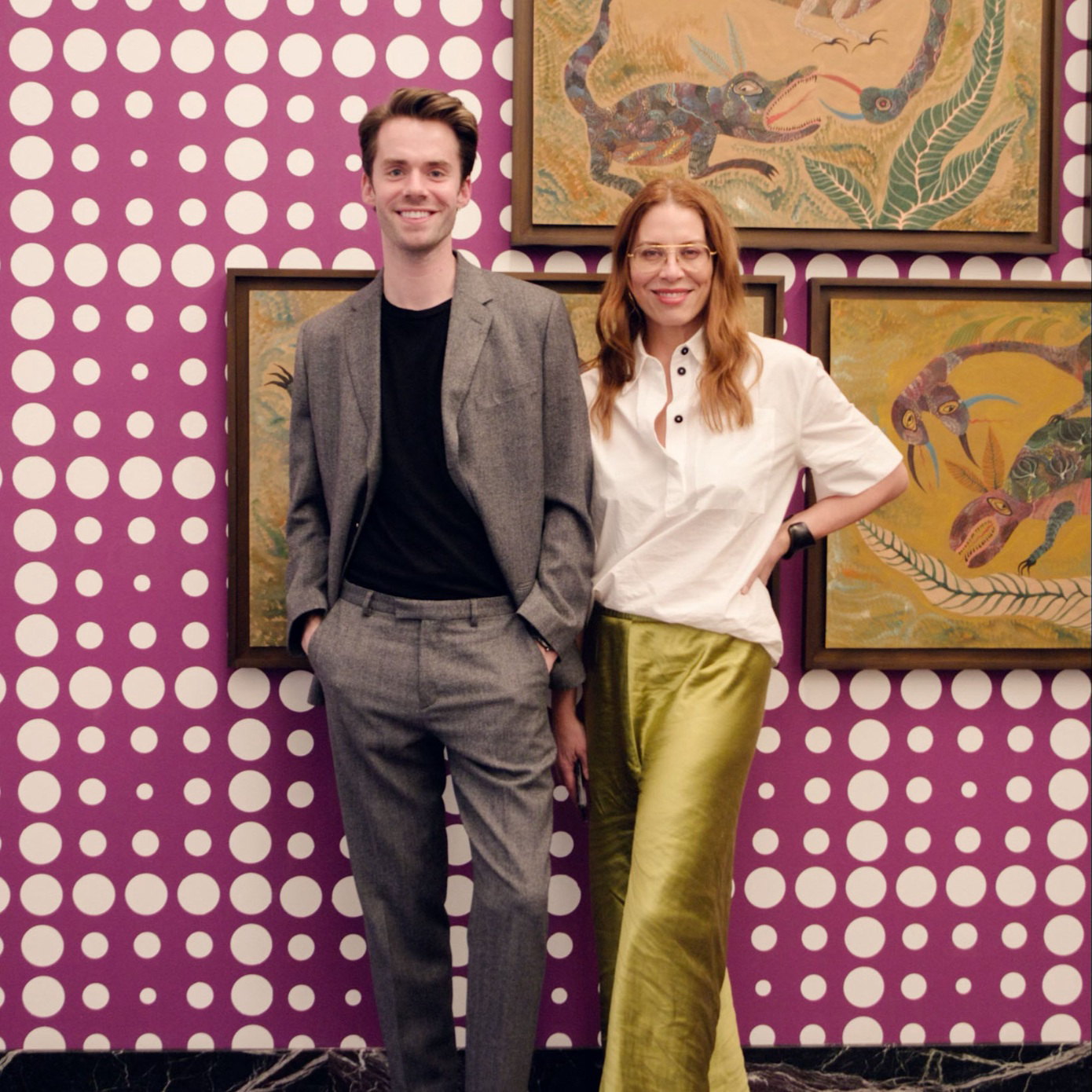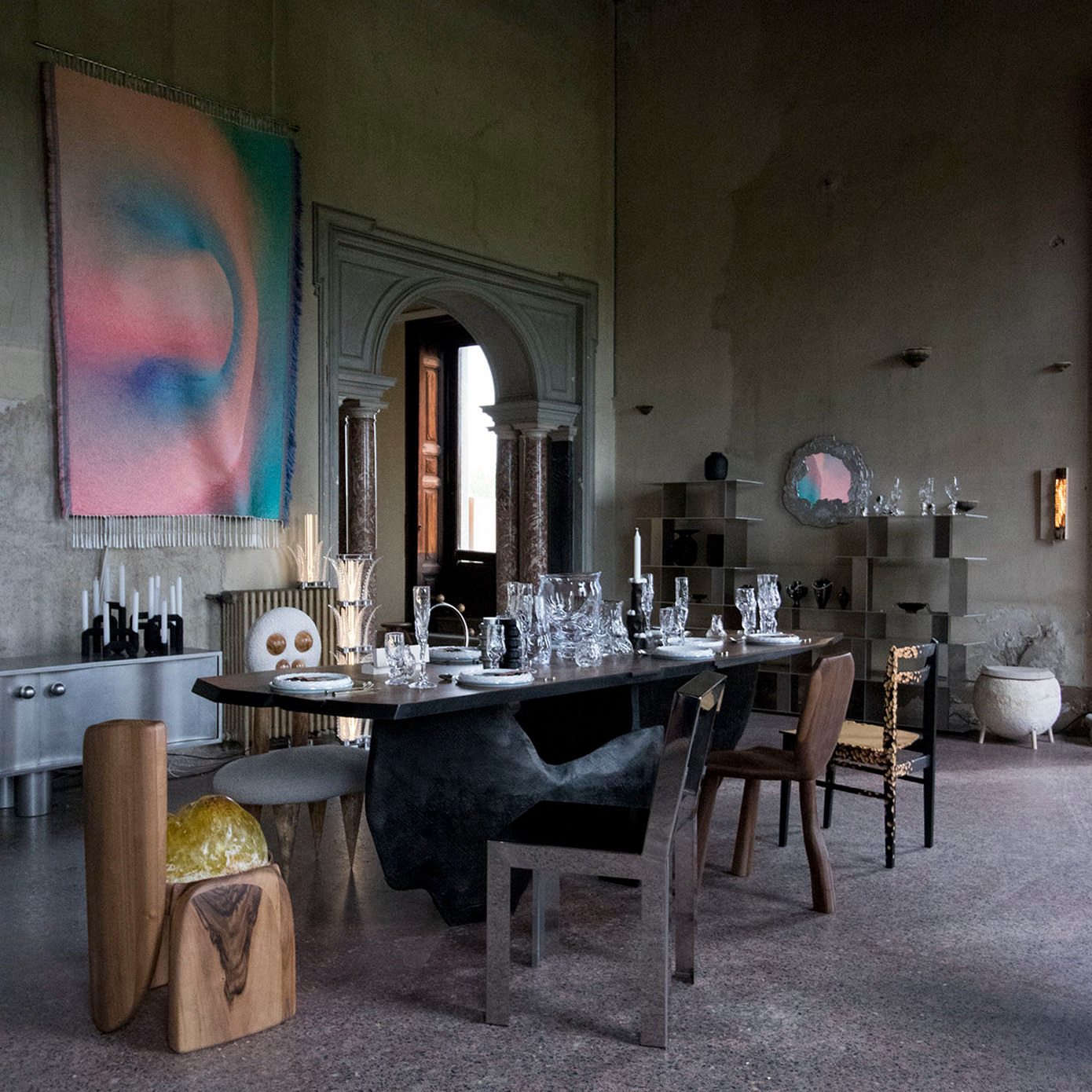
“You almost can’t separate architecture and interiors, and the problem in the United States is that the two are very segregated. I think it hurts the project,” opines Giancarlo Valle on the American way of creating buildings and the spaces therein. Valle, whose eponymous Manhattan firm probes the intersection of architecture, interior design and furniture making, works through these disciplines with a historical approach. “You look at the established mentors in architecture—Gio Ponti, Frank Lloyd Wright, Le Corbusier—and they did a little bit of everything,” he says. It is through this combination of forms that Valle separates his practice from the paradigmatic rigor of a straightforward architecture or interior design firm, and his approach has paid off; he has been garnering accolades from top design magazines both here and abroad since establishing Studio Giancarlo Valle in 2016.
“We have a newfound appreciation for a lost craft that is often so industry-driven. We’re taking on fewer projects, but we take on more in them, starting with the bones. That is how we distinguish ourselves,” he says. While his approach might be novel, Valle has a pedigreed background. Having studied art and then architecture at the University of Michigan, Valle received his Master of Architecture from Princeton in 2010. “There the focus was on scholarship and it was not so applicable. Postmodernism still existed, but it was more conceptual than it was about building,” he recalls. After graduating, he went on to work for several high-profile firms, including Snøhetta and SHoP Architects. He also took on projects of his own, including Phillip Lim’s store in Los Angeles and a studio and retreat for Marilyn Minter, who he met while working for Stan Allen. “Giancarlo came up with some spectacular ideas after we commissioned him to do our furniture as well. We loved everything he did,” says Minter.
But it was the DUMBO apartment that he shares with wife Jane Keltner de Valle, Architectural Digest’s Style Director, and their children that sent Valle down the decorating rabbit hole. Calling it an “obsession” he wanted to perfect, he turned an erstwhile industrial loft into a warm, layered home, punctuated by strong recurring shapes and unexpected color combinations. Furniture by Milo Baughman, Pierre Jeanneret and Line Vautrin jostles with Native American textiles, Ethiopian chairs and works by contemporaries like Green River Project LLC and Sam Stewart.
The peripatetic nature of his childhood informs both his interiors and his own furniture line. One of his more well-known pieces, the Smile Chair, was loosely inspired by the carved forms of Ethiopian furniture. “We acquired a lot,” says Valle, who was born to Peruvian parents of Italian descent and spent his childhood living in San Francisco, Caracas, Chicago and Guatemala. “Our homes were filled with pieces from Peru, Lagos, Ethiopia. It was a weird, rich mix of dark woods and painted things. I hated it at the time—no one got it. I look back on it now and I want it all, and I want to filter it.”
The designer is currently collaborating with Domeau & Pérès on a limited-edition chair for Les Ateliers Courbet and is hoping to delve deeper into upholstery. “Stone, wood and the materials of architecture are so familiar; in a way, they could be a default. But the challenge of understanding upholstery—I have so much respect for it.” While Valle may experiment with distilling and reforming aesthetic traditions, his reverence for the historical is the prism through which he creates and edits. Throughout his office are fantastical maquettes, a modernist dollhouse dream. In one, Valle is testing room layouts for a current project, deploying scale models of iconic chairs by Pierre Paulin and a sofa by Jean Royère. While most practices stick to 3D renderings of projects for clients, Valle’s maquette approach is refreshingly anachronistic and somehow more visually digestible.
“You learn so much through the process, in just understanding the scale. We are always in dialogue with history in some way. That is the essence of design to me,” says Valle. “Today, we’re not stuck to a specific style, but it’s beyond ‘eclectic.’ I hate that word. What does it mean, anyway? You need a point of view.”



